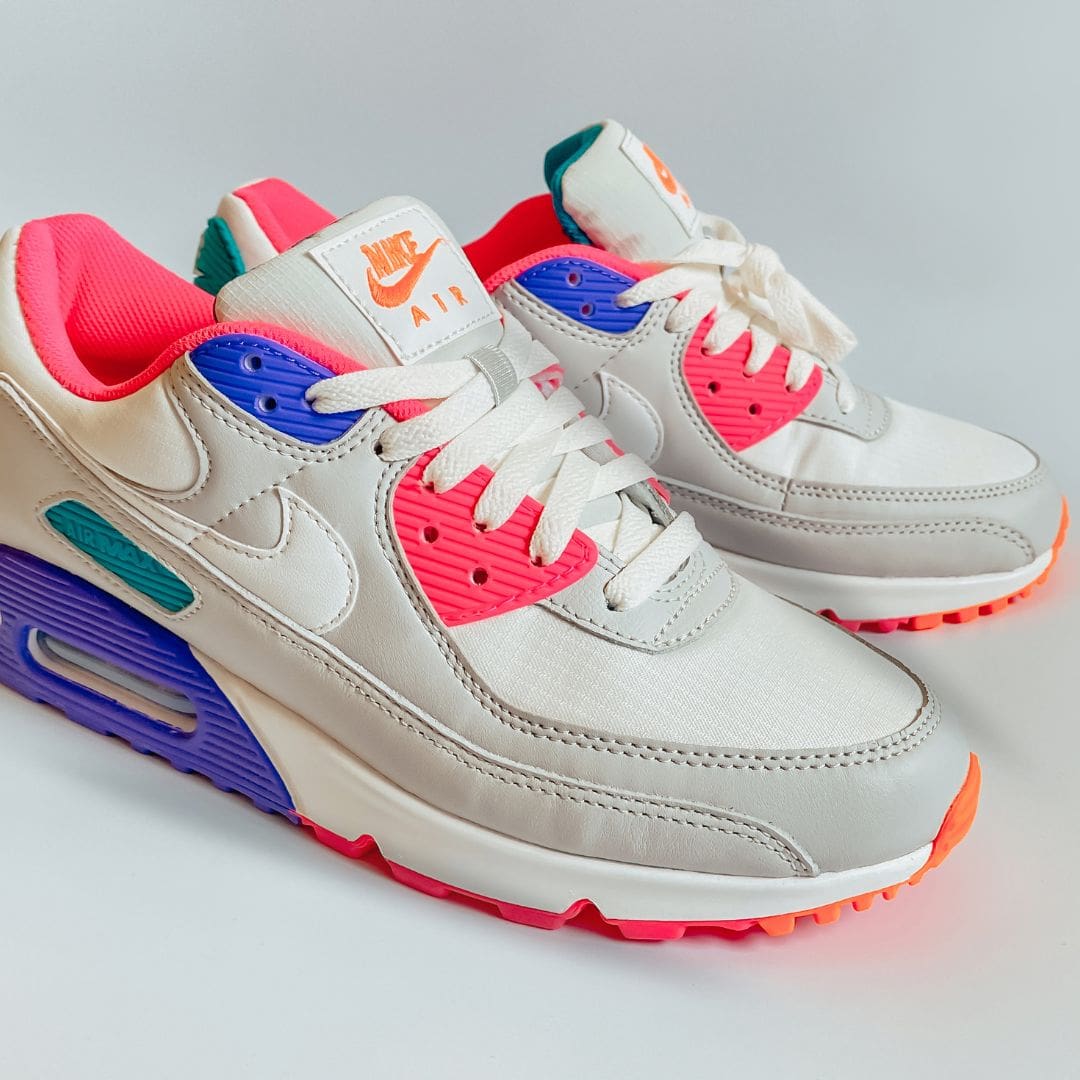
Why Are Shoes Called Sneakers? – The Surprising History and Fun Facts Behind the Name
Sneakers are everywhere. From the moment we wake up to hit the gym, go for a jog, or head out casually with friends, sneakers are often our go-to footwear. They’re stylish, comfortable, and versatile.
But have you ever paused and wondered: “Why are shoes called sneakers?” The name sounds quirky—almost playful—and doesn’t seem to describe the shoe itself at first glance.
This question leads us into a fascinating journey through history, language, fashion, and even a little bit of science. In this article, we’ll explore the origins of the word “sneakers,” how it became popular, the evolution of sneaker culture, and why sneakers have become so much more than just footwear.
The Curiosity Behind the Word “Sneakers”
Shoes come in all shapes and styles—heels, boots, sandals, loafers, and many more. Most of these names describe either their design or their purpose. But “sneakers” feels different.
When you think of sneakers, you probably picture a pair of sporty, casual shoes with rubber soles. The name hints at something sneaky, as if the shoes allow you to walk quietly or tiptoe without making noise.
This isn’t just your imagination—there’s a real historical reason why they were called that. To understand it, we need to go back to a time before sneakers even existed.
The Early Days of Shoes Before Sneakers Existed
For centuries, shoes were made mostly of leather, wood, or even straw. These materials were durable but often heavy and stiff. The soles were hard and made a distinct clacking sound on floors, especially wooden or stone ones.
In the 18th and early 19th centuries, there was no concept of “casual shoes” for sports or leisure. People wore boots or formal shoes almost everywhere, and comfort was often sacrificed for durability.
Activities like running, playing, or exercising in such footwear were difficult. There was a need for something lighter, softer, and more flexible—especially for outdoor activities and sports.
The Birth of Rubber-Soled Shoes
Everything changed in the 19th century with the invention of vulcanized rubber by Charles Goodyear in 1839. Vulcanization is a process that strengthens rubber, making it flexible yet durable.
Soon, manufacturers started using this new material to create rubber soles for shoes. By the 1860s, the first versions of casual rubber-soled shoes appeared. These were often called “plimsollshttps://en.wikipedia.org/wiki/Plimsoll_(shoe)” in the UK.
Plimsolls were lightweight canvas shoes with rubber soles—mainly worn for beach outings or sports. Compared to hard leather shoes, they were revolutionary: quiet, soft, and comfortable.
How the Term “Sneakers” Was Coined
The name “sneakers” came later. In 1862, an American advertising agent named Henry Nelson McKinney is often credited with using the term. While promoting rubber-soled shoes, he noticed how these shoes allowed people to walk or ‘sneak’ around quietly without the loud clatter of leather boots.
The word “sneak” means to move silently or secretly. Since these shoes made almost no noise, the name “sneakers” caught on.
By the late 19th century, the term was commonly used in the United States to describe this new type of silent, rubber-soled footwear.
The Role of Advertising in Popularizing the Name
In the late 1800s and early 1900s, advertising played a huge role in spreading the term “sneakers.” Companies producing rubber-soled shoes realized that calling them “sneakers” made them sound exciting and different from regular footwear.
Ads often promoted sneakers as shoes for young, active people—ideal for tennis, running, and other leisure activities. The fun, catchy name helped the shoes appeal to the growing middle class that was becoming more interested in recreation and sports.
Sneakers in the 19th and Early 20th Century
In the 1890s, the U.S. Rubber Company introduced a line of sneakers known as Keds, which officially hit the market in 1916. These were simple canvas-and-rubber shoes that became extremely popular among both men and women.
Around the same time, another iconic sneaker appeared: Converse All Star, launched in 1917. Designed as a basketball shoe, it later became a cultural icon.
Sneakers were no longer just for sneaking around; they were becoming part of daily wear and sports gear.
Sneakers in Sports and Athletics
Sneakers played a major role in revolutionizing sports. Athletes could now perform better with shoes that were lighter, offered better grip, and were easier on the feet.
In basketball, Converse dominated early on.
In tennis, brands like Dunlop and Adidas began producing specialized sneakers.
For running, spikes and lighter rubber soles improved speed and comfort.
The association of sneakers with athletic performance helped cement their popularity in the 20th century.
Sneakers Enter Mainstream Fashion
By the mid-20th century, sneakers were no longer confined to sports fields. They became symbols of youth culture, casual fashion, and even rebellion.
In the 1950s, Hollywood stars like James Dean and Marlon Brando often wore sneakers in movies, making them trendy among teenagers. The simple white sneaker became a fashion statement.
The Rise of Sneaker Brands
From the 1960s onward, sneaker brands exploded in popularity:
Nike was founded in 1964 as Blue Ribbon Sports and became Nike in 1971, introducing the famous “Swoosh” logo.
Adidas and Puma, founded in Germany, became global giants.
Reebok, New Balance, and Fila added to the competition.
Each brand brought innovation in design, cushioning, and marketing—helping sneakers dominate both athletic and casual footwear markets.
The Evolution of Sneaker Culture
By the 1980s and 1990s, sneakers were more than just shoes; they were cultural icons.
Basketball sneakers like Nike Air Jordans became collector’s items.
Hip-hop culture adopted sneakers as a symbol of style and street fashion.
Limited-edition releases turned sneakers into status symbols.
Today, sneaker culture is a billion-dollar industry, with resale markets and collectors (known as sneakerheads) driving demand for rare and vintage pairs.
Global Popularity: Sneakers Around the World
While the term “sneakers” is mostly used in the United States, other regions have their own names:
In the UK, people often call them “trainers.”
In Australia, they’re sometimes called “runners.”
In South Africa, they’re often referred to as “takkies.”
Fun Facts About Sneakers You Probably Didn’t Know
Here are some lesser-known, fun facts:
The first sneakers were made for beachwear in the 1830s-60s.
Sneakers were once considered inappropriate for formal public outings.
The Converse Chuck Taylor All Star is one of the best-selling sneakers of all time.
Michael Jordan’s first Air Jordans were banned by the NBA in 1985 for not meeting uniform rules.
Sneaker resale is now a multi-billion-dollar market worldwide.
Sneakers in Pop Culture and Entertainment
Sneakers have appeared in countless movies, songs, and TV shows. Films like “Back to the Future II” famously featured self-lacing Nike shoes. Rap songs often mention popular sneaker brands, further boosting their fame.
Celebrities like Kanye West, Rihanna, and Travis Scott have collaborated with sneaker brands to launch exclusive lines, blending music, fashion, and sports.

Modern Sneaker Technology
Today’s sneakers are highly advanced. Innovations include:
Air cushioning for impact protection.
Boost foam for energy return.
Flyknit and Primeknit materials for lightweight comfort.
Smart sneakers that track steps and performance.
The Environmental Impact of Sneakers
While sneakers have evolved technologically, they also pose environmental challenges due to mass production and non-biodegradable materials.
Brands are now exploring eco-friendly sneakers made from recycled materials and plant-based fabrics to reduce waste and carbon footprints.
Collectors and Sneakerheads: A Modern Phenomenon
Collecting sneakers has become a passion and even a profession for many. Rare editions can sell for thousands of dollars. Sneaker conventions, online communities, and resale platforms fuel this trend.
Sneakers vs. Other Types of Shoes
Compared to boots or leather dress shoes, sneakers stand out because they:
Offer better comfort for daily wear.
Are versatile for sports and fashion.
Tend to be lighter and quieter.
Why the Name Still Sticks Today
Even though sneakers are now flashy and colorful—hardly meant for “sneaking”—the name stuck. It’s catchy, nostalgic, and part of history.
Much like how we still say “dial a number” even though we no longer use rotary phones, “sneakers” has remained in our vocabulary because of tradition and cultural impact.
The Future of Sneakers
Looking ahead, sneakers will continue to evolve:
3D-printed sneakers are becoming a reality.
Sustainable materials will become more common.
Integration with wearable technology may allow sneakers to monitor health stats or adapt cushioning on the go.
A Name That Sneaks Into Our Lives
The name “sneakers” comes from something as simple as walking quietly. Yet over the decades, these shoes have transformed into a global phenomenon—an inseparable part of sports, fashion, and everyday life.
Next time you lace up your favorite pair, remember: you’re wearing a piece of history, a shoe that once let people sneak around without making a sound, and now lets us step confidently into the future.
